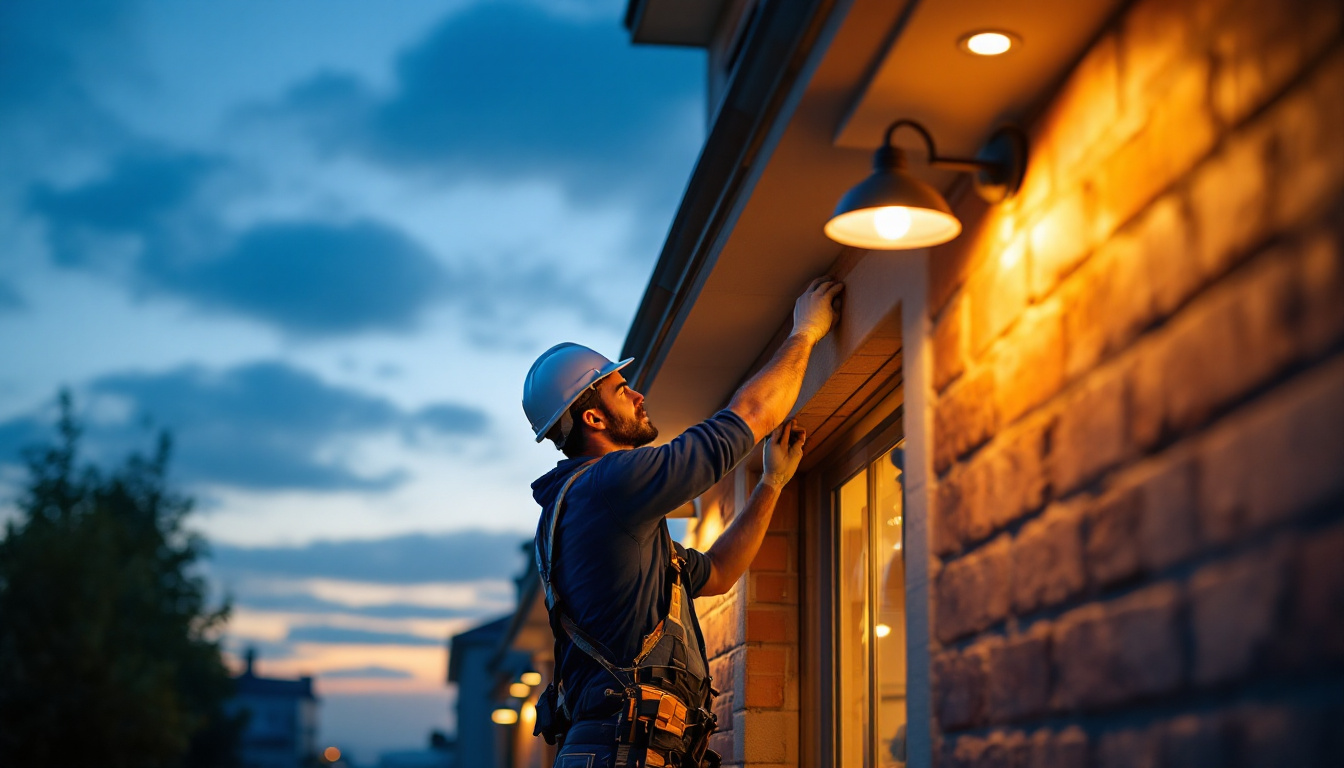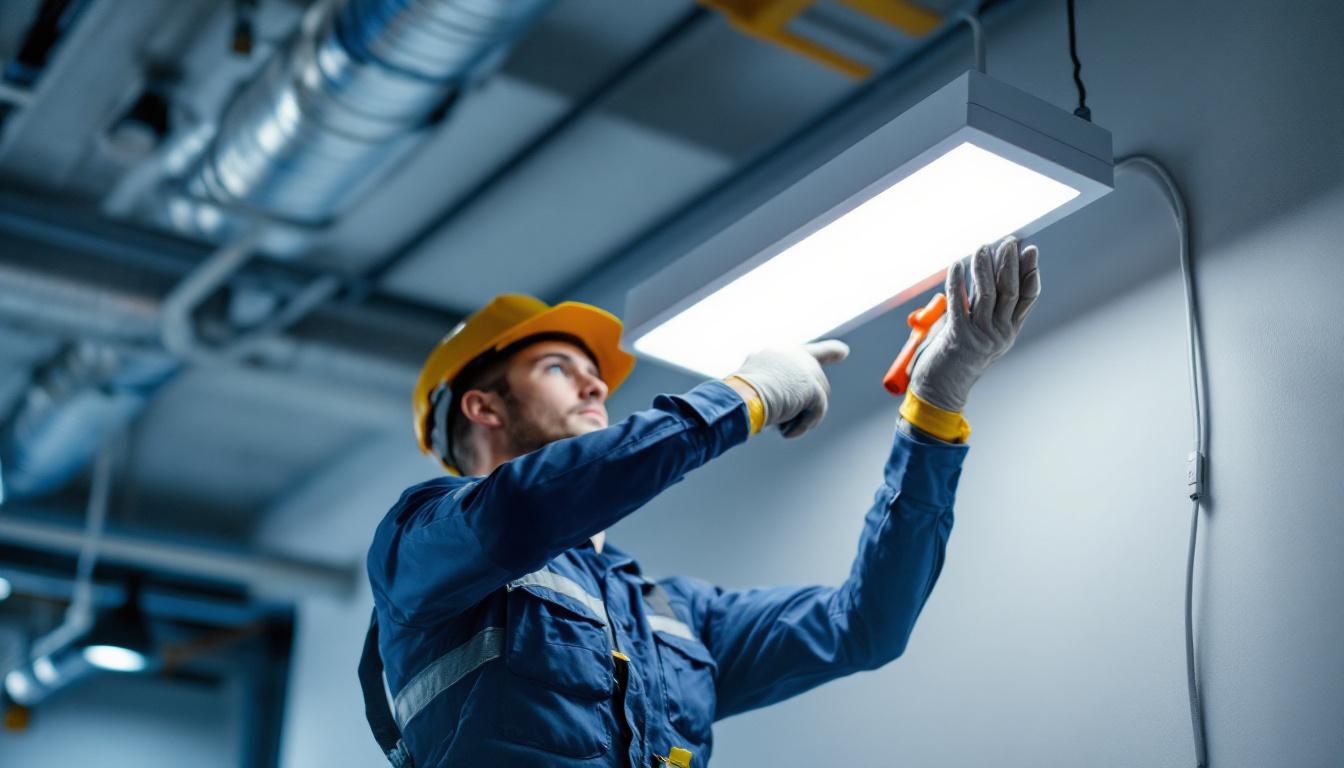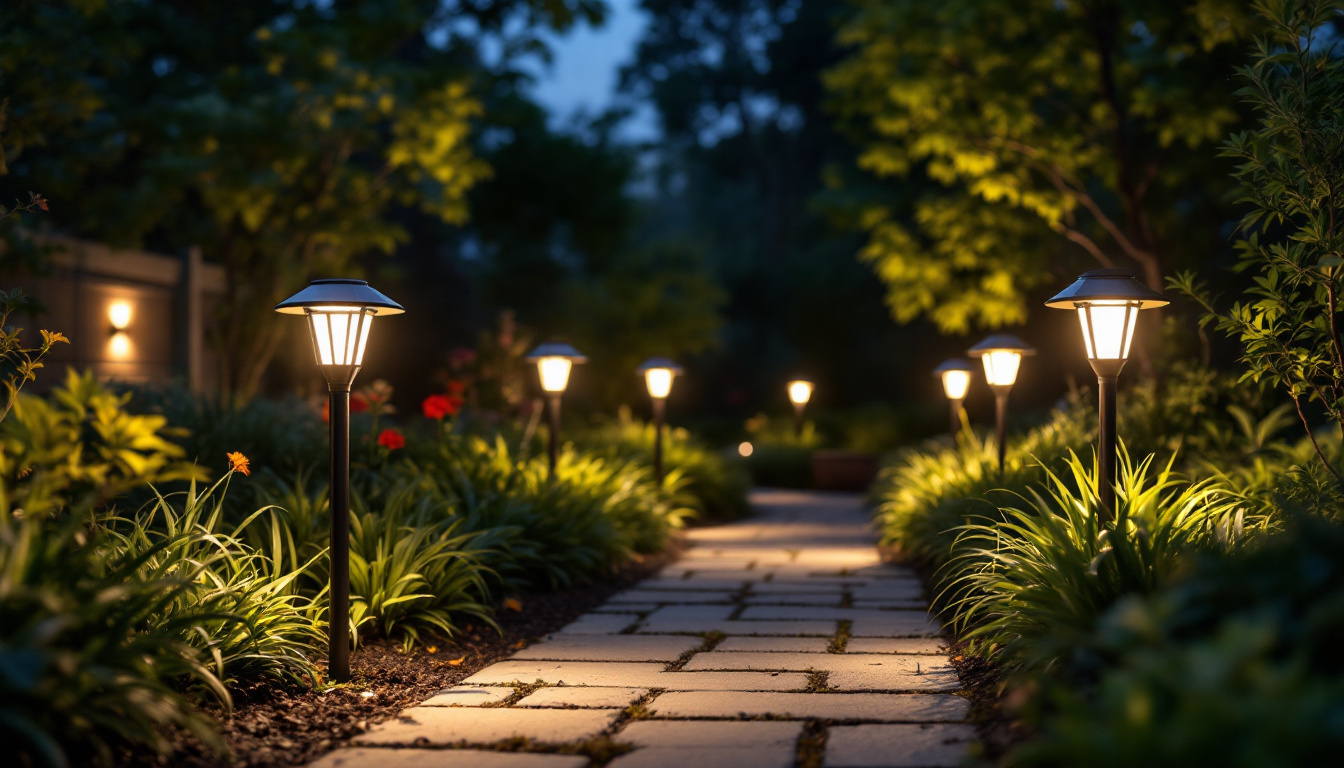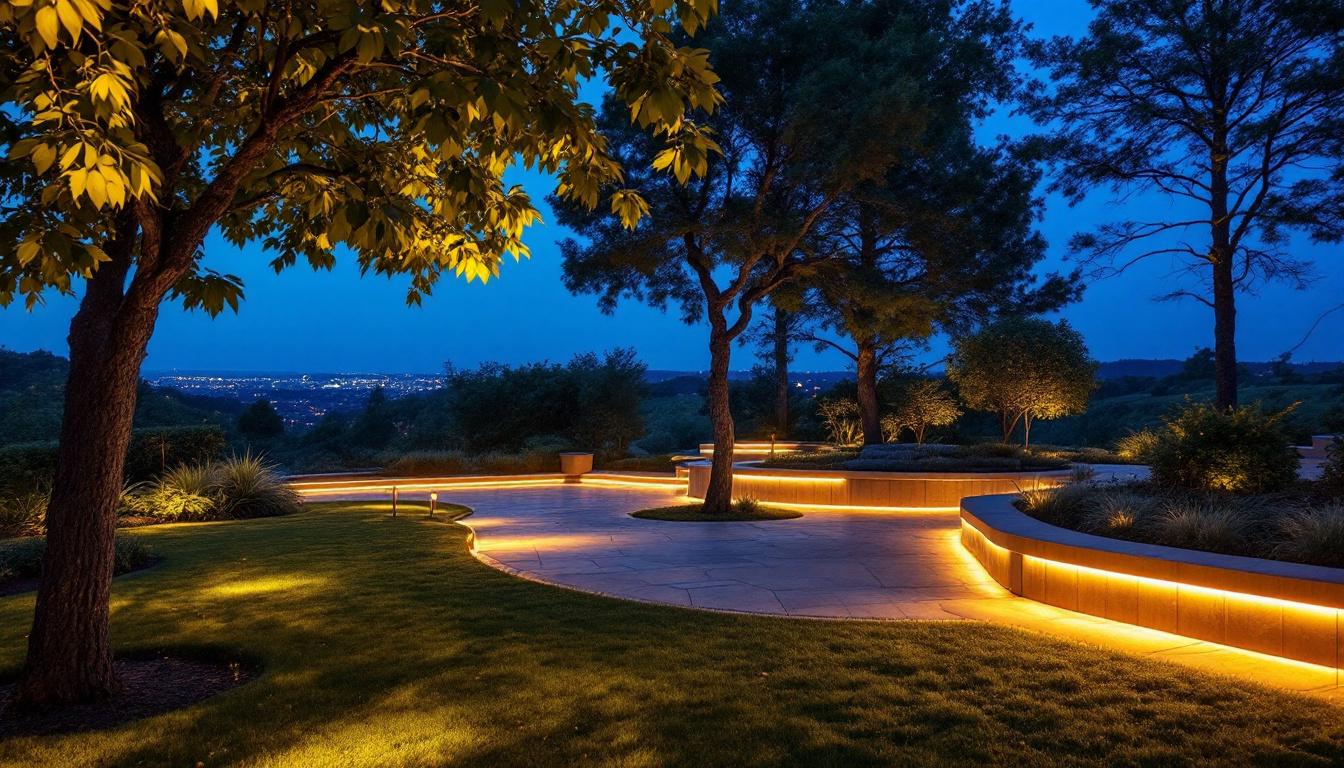
In the realm of architectural design and construction, outside lighting plays a pivotal role in enhancing the aesthetic appeal, safety, and functionality of buildings. For lighting contractors, the task of designing and installing exterior lighting systems presents a unique set of challenges. Understanding these challenges is crucial for contractors aiming to deliver high-quality lighting solutions that meet both client expectations and regulatory standards.
The first challenge that lighting contractors face when working on outside lighting for buildings is understanding the diverse landscape in which they operate. Each project comes with its own set of variables, including the architectural style of the building, the surrounding environment, and the intended use of the space.
One of the primary considerations is ensuring that the lighting design is compatible with the building’s architecture. A modern office building may require sleek, minimalist lighting fixtures, while a historic structure might benefit from more traditional lighting styles. Contractors must be adept at selecting fixtures that not only illuminate effectively but also enhance the building’s aesthetic. This involves a keen eye for detail, as the wrong choice can detract from the visual appeal of the structure. Furthermore, the integration of smart lighting solutions has become increasingly popular, allowing for dynamic adjustments based on time of day or occupancy, which can further complement the architectural features.
Environmental conditions can significantly impact the effectiveness of outdoor lighting. Factors such as weather patterns, local flora, and fauna can influence both the installation and maintenance of lighting systems. For instance, areas prone to heavy rainfall or snow may require specific types of fixtures that are weather-resistant. Additionally, contractors must consider how light pollution can affect local wildlife and nearby residential areas. Understanding the local ecosystem is crucial; for example, certain species may be sensitive to artificial light, necessitating the use of fixtures that minimize glare and direct light. Moreover, the landscape itself can play a role in how light is distributed, with trees and other natural elements potentially obstructing illumination or creating unwanted shadows that need to be accounted for in the design process.
Another substantial challenge is navigating the myriad of regulations and codes that govern outdoor lighting. These regulations can vary significantly from one municipality to another, and staying informed is vital for contractors. The complexity of these rules can often lead to confusion, especially for those who may be new to the industry or working in a region with which they are unfamiliar. Therefore, investing time in understanding the local landscape of regulations is not just a best practice; it is essential for successful project execution.
Local building codes often dictate the types of fixtures that can be used, the maximum allowable brightness, and even the hours during which lights can be illuminated. Contractors must conduct thorough research to ensure compliance with these regulations, as failing to do so can result in costly fines and project delays. Additionally, some municipalities have specific guidelines aimed at reducing light pollution, which can affect the design choices available to contractors. This means that professionals must not only be aware of the regulations but also be prepared to adapt their designs to minimize environmental impact while still meeting client needs.
In addition to local codes, energy efficiency standards are becoming increasingly stringent. Contractors are required to integrate energy-efficient lighting solutions that not only comply with regulations but also meet the growing demand for sustainable practices. This often involves utilizing LED technology and smart lighting systems that can be controlled remotely, further complicating the design and installation process. The shift towards these technologies not only helps in reducing energy consumption but also aligns with broader environmental goals, such as lowering carbon footprints and promoting renewable energy sources. As a result, contractors must stay abreast of the latest advancements in lighting technology and energy efficiency trends, ensuring that their solutions are not only compliant but also innovative and forward-thinking. Moreover, many jurisdictions offer incentives for using energy-efficient products, providing an additional layer of motivation for contractors to prioritize sustainability in their projects.
Designing an effective outdoor lighting system requires a balance between functionality and aesthetics. This is where many contractors face significant hurdles. The interplay of light and shadow can dramatically alter the perception of a space, making it essential for designers to consider not only the practical aspects of illumination but also how the lighting complements the surrounding environment. An outdoor lighting system should enhance the beauty of landscaping, architectural features, and pathways while ensuring safety and usability during nighttime hours.
Determining the appropriate illumination levels is a critical aspect of outdoor lighting design. Too much light can create glare and discomfort, while too little can lead to safety hazards. Contractors must conduct detailed assessments to establish the right balance, considering factors such as the purpose of the space, the types of activities that will occur, and the desired ambiance. For instance, a cozy seating area may benefit from soft, warm lighting to create an inviting atmosphere, whereas a pathway may require brighter, more focused lighting to ensure safe navigation. Additionally, the use of dimmers and smart controls can provide versatility, allowing users to adjust lighting levels based on their needs and preferences throughout the evening.
The rapid advancement of lighting technology presents both opportunities and challenges. While new technologies can enhance energy efficiency and provide greater control over lighting systems, they also require contractors to stay updated on the latest products and installation techniques. This ongoing education is essential for ensuring that contractors can offer the best solutions to their clients. Innovations such as LED fixtures, solar-powered lights, and smart home integration have transformed the landscape of outdoor lighting. For example, LED lights not only consume significantly less energy than traditional incandescent bulbs but also have a longer lifespan, reducing the frequency of replacements. Furthermore, the integration of smart technology allows homeowners to control their outdoor lighting remotely, set schedules, and even adjust brightness levels based on the time of day or specific events, making the outdoor space more functional and user-friendly.
The installation phase of outdoor lighting projects can be fraught with difficulties. From site conditions to logistical issues, contractors must be prepared to tackle a range of challenges.
Outdoor sites can vary dramatically in terms of terrain and accessibility. Uneven ground, existing landscaping, and other physical barriers can complicate the installation process. Contractors must be skilled in assessing site conditions and adapting their installation strategies accordingly, which may involve additional equipment or labor.
Outdoor lighting projects often require coordination with other trades, such as electricians, landscapers, and general contractors. Effective communication and collaboration are essential to ensure that all aspects of the project align seamlessly. Miscommunication can lead to delays and increased costs, making it crucial for lighting contractors to establish clear lines of communication from the outset.
Once an outdoor lighting system is installed, the focus shifts to maintenance and ensuring the longevity of the fixtures. This presents another set of challenges for contractors.
outdoor lighting systems require regular maintenance to function optimally. This includes cleaning fixtures, replacing bulbs, and inspecting wiring and connections. Contractors must educate their clients on the importance of maintenance and may even offer ongoing maintenance services to ensure the systems remain in good working order.
Choosing durable fixtures that can withstand environmental conditions is crucial for long-term performance. Contractors must be knowledgeable about the materials and technologies available, selecting products that offer the best balance of durability and aesthetic appeal. This decision can significantly impact the overall satisfaction of the client and the longevity of the lighting system.
Managing client expectations is a vital aspect of any lighting project. Contractors must ensure that clients have a clear understanding of what is achievable within their budget and timeline.
Budget constraints can limit the options available for outdoor lighting projects. Contractors must work closely with clients to identify their priorities and find creative solutions that meet their needs without exceeding their budget. This may involve suggesting alternative fixtures or design approaches that still deliver the desired outcome.
Establishing clear communication channels is essential for managing client expectations. Regular updates and transparent discussions about project progress can help to alleviate concerns and build trust. Contractors should encourage clients to express their preferences and feedback throughout the process, ensuring that the final result aligns with their vision.
As technology continues to evolve, so too do the trends in outdoor lighting. Staying ahead of these trends is vital for contractors looking to remain competitive in the market.
Smart lighting systems are gaining popularity due to their energy efficiency and ease of use. These systems allow users to control lighting remotely, adjust brightness levels, and even set schedules. Contractors who are knowledgeable about smart technology can offer clients innovative solutions that enhance convenience and functionality.
With an increasing emphasis on sustainability, contractors are expected to incorporate eco-friendly practices into their projects. This includes using energy-efficient fixtures, implementing solar-powered lighting options, and considering the environmental impact of their designs. By adopting sustainable practices, contractors can not only meet client demands but also contribute positively to the environment.
Outdoor lighting for buildings presents a myriad of challenges for lighting contractors, from understanding the landscape and navigating regulatory compliance to managing client expectations and adapting to future trends. By recognizing these challenges and developing strategies to address them, contractors can enhance their service offerings and deliver exceptional lighting solutions that meet the diverse needs of their clients.
Ultimately, success in this field requires a blend of technical knowledge, creativity, and effective communication. As the industry continues to evolve, staying informed and adaptable will be key to thriving in the competitive world of outdoor lighting.
Overcome the challenges of outdoor lighting with LumenWholesale, where we provide lighting contractors with the highest quality, spec-grade lighting products at unbeatable wholesale prices. Say goodbye to local distributor markups and hello to superior lighting solutions that meet the most rigorous industry standards. Our extensive selection ensures you have access to reliable, high-performance lighting for every project, big or small. Plus, with free shipping on bulk orders, you can stock up on premium lighting at the best value — all without hidden fees or compromises. Elevate your outdoor lighting projects by choosing the perfect blend of quality, affordability, and convenience at LumenWholesale.

Discover essential tips and best practices for lighting contractors working with 8 ft LED light fixtures.

Discover the transformative power of choosing the right lights and bulbs for your next lighting installation project.

Discover the ultimate guide for lighting professionals on selecting long-lasting solar lights.

Discover the ultimate resources for mastering linear outdoor lighting with insights from top lighting contractors.